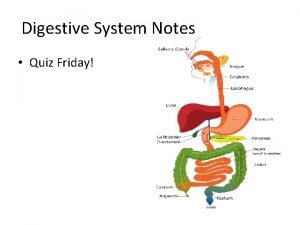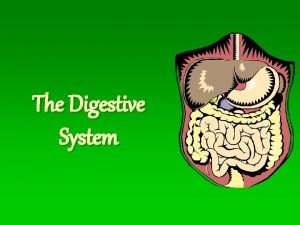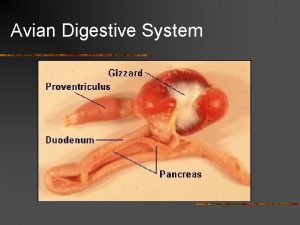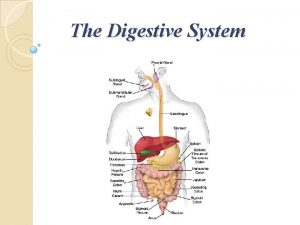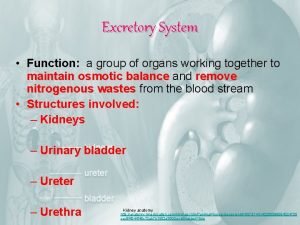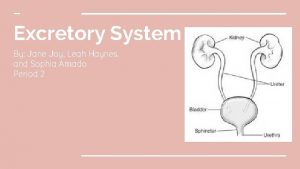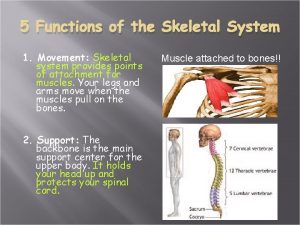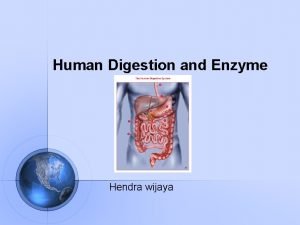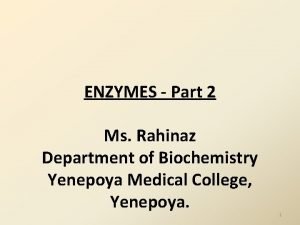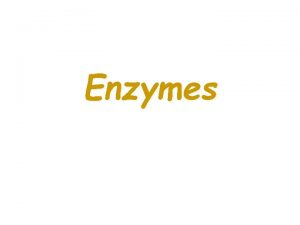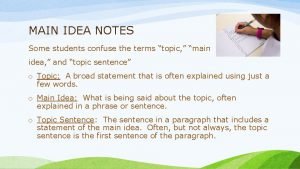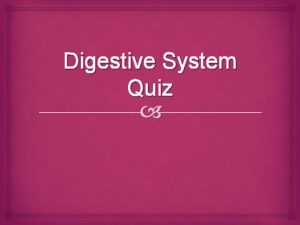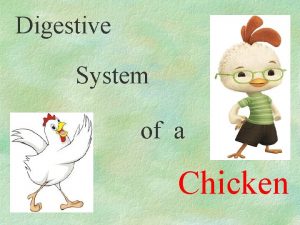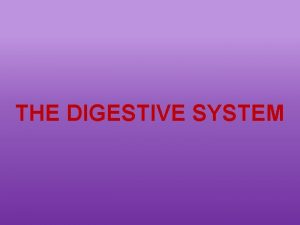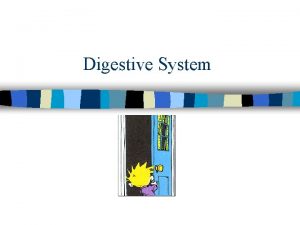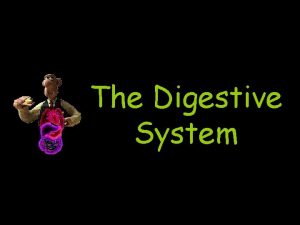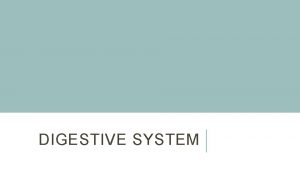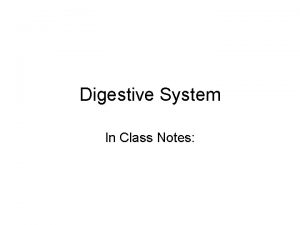Digestive System Notes Quiz Friday 4 main functions


















- Slides: 18

Digestive System Notes • Quiz Friday!

4 main functions: • 1. Ingestion—food material taken into mouth • 2. Digestion—food is broken down, mechanically and chemically, as it travels through the gastrointestinal tract. Ø Digestive enzymes aid the breakdown of complex nutrients. • Proteins → amino acids • Sugars → glucose • Fats → fatty acids or triglycerides

3. Absorption • Digested food passes into the bloodstream through lining cells of the small intestine. • Nutrients travel to all cells of the body. 4. Elimination *The body eliminates solid waste materials that cannot be absorbed into bloodstream. *The large intestine concentrates feces. • Cells burn nutrients to release the energy *The wastes pass out of stored in food. the body through the anus.

Small Intestine Villi in the lining of the small intestine help absorb nutrients into the bloodstream.

Epiglottis- Flap leading to two tubes. The esophagus & Trachea

Diagram on Quiz- With Word Bank The Digestive Tract

Parts of the Stomach Food travels through the digestive tract by peristalsis (wave like movements)

Stomach Continued What is the function of a sphincter? Opens to allow for food to travel through when peristalsis passes by.

Parts of the small intestine: Extends from Ilium to anus Function: Major digestive organ. Usable food is prepared for journey into cells of the body. Length? 6 -13 feet long 3 parts: D-J-I Duodenum (10 inches) Jejunum (8 feet) Ileum (12 feet)- joins the large intestines

Large Intestines (AKA colon) • Function: Receives fluid waste from digestion and stores until it can be released form the body. • Size? Larger in width then small intestines, but shorter in length (5 feet) • Made up of? Ascending, Transverse & Descending, Sigmoid colon and Anus. • Subdivisions of L. I. ? Cecum, appendix, colon, rectum and anal canal.

Large Intestines Continued Function of appendix? No real function, not needed!

Function Pancreas? Converts food into fuel & helps assist in regulating blood sugar. Function of Gall Bladder? Store & concentrates bile (help in breakdown of fats & food)

Functions of the Liver… Besides producing bile, the liver also… • Helps maintain normal blood glucose levels • Manufactures blood proteins necessary for clotting • Releases bilirubin, a pigment in bile • Removes toxins and poisons from the blood

Food Pathway through the GI Tract Food enters through the oral cavity and exits through the anus

Abnormal Conditions • Hernia – protrusion of an organ or part through the muscle normally containing it

Abnormal Conditions Continued • Anal fistula – abnormal tube -like passageway near the anus • Colonic polyposis – polyps (out pouching) protrude from the mucous membrane of the colon • Diverticulosis – abnormal side pockets (outpouchings) in the intestinal wall

Abnormal Conditions Continued • Dysentery – painful, inflamed intestines • Hemorrhoids – swollen, twisted, varicose veins in the rectal region • Cirrhosis – chronic degenerative disease of the liver • Viral hepatitis – inflammation of the liver caused by a virus • Cholelithiasis – gallstones in the gallbladder

 The food path
The food path Major function of digestive system
Major function of digestive system Respiratory digestive and circulatory system
Respiratory digestive and circulatory system What is the main goal of the digestive system
What is the main goal of the digestive system Laryngopharynx
Laryngopharynx Avian digestive system
Avian digestive system Define todays
Define todays Digestive system
Digestive system Nervous system and digestive system
Nervous system and digestive system Major functions of the excretory system
Major functions of the excretory system 5 facts about the excretory system
5 facts about the excretory system 5 functions of a skeletal system
5 functions of a skeletal system Enzymes in small intestine
Enzymes in small intestine List of enzymes and their functions
List of enzymes and their functions Examples of enzymes
Examples of enzymes Wisc
Wisc Main idea notes
Main idea notes Will future
Will future Stated and implied main idea
Stated and implied main idea
